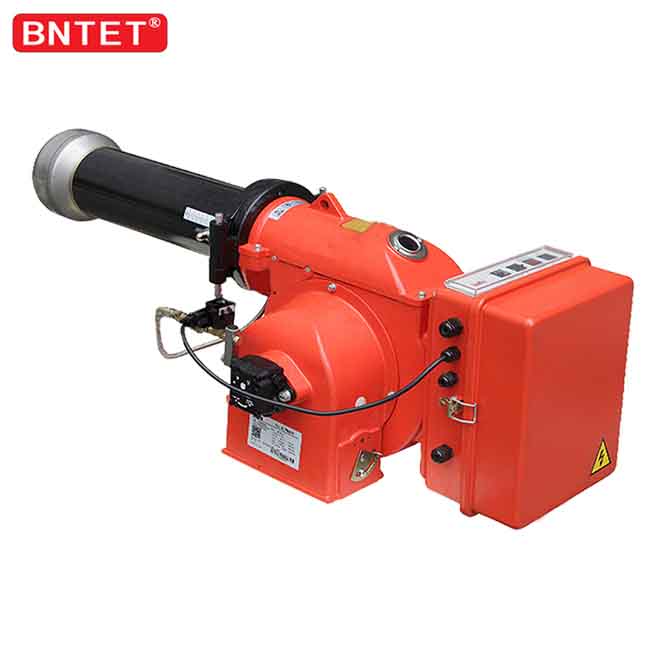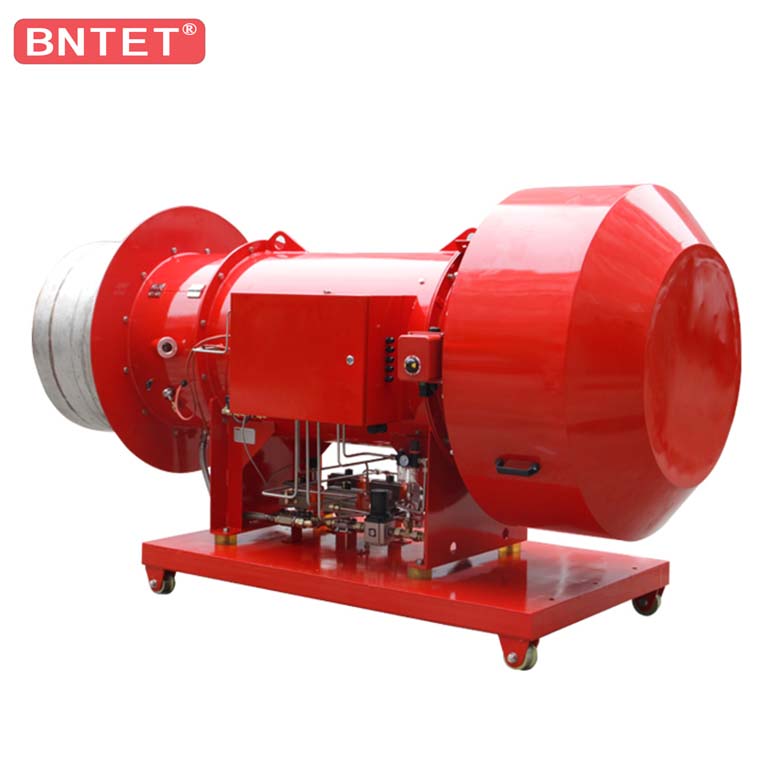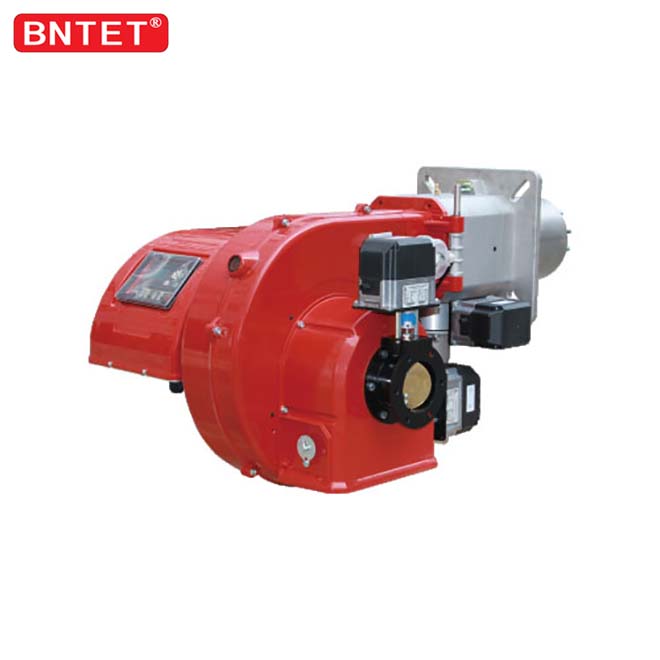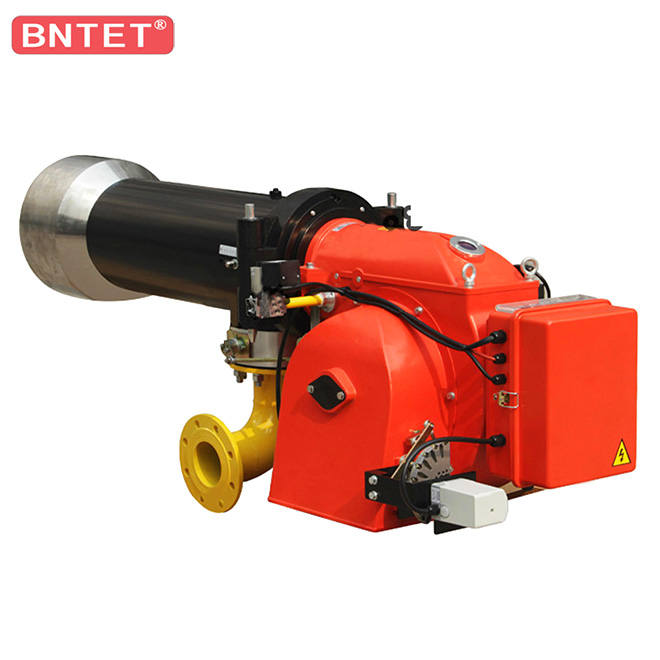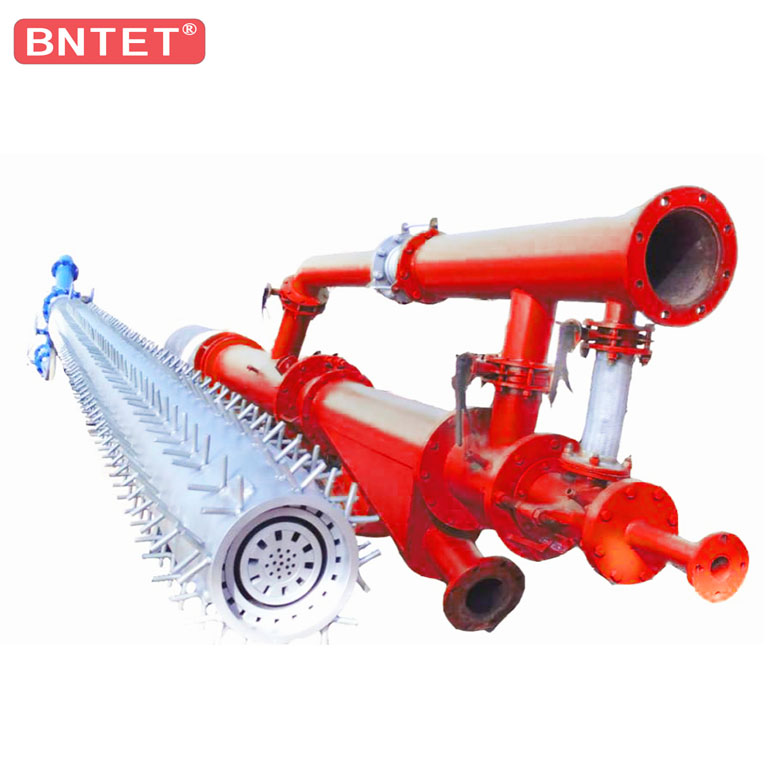
If a fully automatic oil (gas) burner with good performance is installed on a boiler, whether it still has the same good combustion performance depends largely on whether the aerodynamic characteristics of the two match. Only a good match can give full play to the performance of the burner, ensure the stable combustion of the furnace, achieve the expected thermal energy output, and obtain the good thermal efficiency of the boiler.
Gas dynamic characteristics matching
A single-unit fully automatic burner is like a flamethrower, which injects flame into the furnace (combustion chamber) to achieve complete combustion and output heat in the furnace; the burner manufacturer determines the combustion completeness of the product in In a specific standard combustion chamber. Therefore, the standard experimental conditions are generally used as the selection conditions for burners and boilers. These conditions can be summed up as:
1. Power;
2. Air pressure in the furnace;
3. The space size and geometry (diameter and length) of the furnace.
The so-called matching of aerodynamic characteristics refers to the degree to which these three conditions are met.
Power
The power of the burner refers to how much mass (kg) or volume (m3/h, under standard conditions) fuel can be burned per hour when it is fully burned, and the corresponding heat energy output (kw/h or kcal/h) ). The boiler is calibrated for steam output and fuel consumption. The two must be matched when selecting.
Gas pressure in the furnace
In an oil (gas) boiler, the hot air flow starts from the burner and is exhausted to the atmosphere through the furnace, heat exchanger, flue gas collector and smoke exhaust pipe, forming a fluid thermal process. The hot air flow generated after combustion, the upstream pressure head flows in the furnace channel, just like the water in the river, and the level difference (drop, water head) flows downstream. Because the furnace walls, channels, elbows, baffles, spurs and chimneys all have resistance to the flow of gas (called flow resistance), it will cause pressure loss. If the pressure head cannot overcome the pressure loss along the way, the flow will be can not achieve. Therefore, a certain flue gas pressure must be maintained in the furnace, which is called back pressure for the burner. For boilers without an induced draft device, the furnace pressure must be higher than atmospheric pressure after considering the pressure loss along the way.
The size of the back pressure directly affects the output of the burner, and the back pressure is related to the size of the furnace, the length and geometry of the flue. The boiler with large flow resistance requires the pressure of the burner to be high. For a specific burner, its pressure head has a maximum value, which corresponds to the maximum air damper and maximum air flow state. When the air intake throttle valve changes, the air volume and pressure also change, and the output of the combustion engine also changes. The pressure head is small when the air volume is small, and the pressure head is high when the air volume is large. For a specific Guohu, when the incoming air volume is large, the flow resistance will increase, which will increase the back pressure of the furnace, and the increase of the back pressure of the furnace will suppress the air output of the burner. Therefore, you must understand when choosing a burner Its power curve is matched reasonably.
The influence of the size and geometry of the furnace
For the boiler, the space size of the furnace is first determined by the selection of the heat load intensity of the furnace during the design, and the volume of the furnace can be initially determined based on it.
After the furnace volume is determined, its shape and size should also be determined. The design principle is to make full use of the furnace volume; try to avoid dead corners, have a certain depth, reasonable flow direction, and ensure sufficient reaction time to make the fuel completely burn in the furnace. In other words, let the flame sprayed by the burner have enough residence time in the furnace, because although the oil mist particles are small (<0.01mm), it has been mixed to ignite and start burning before it is sprayed out of the burner, but it is not sufficient. If the furnace is too shallow and the residence time is not enough, incomplete combustion will occur. The lighter exhaust CO exceeds the standard, and the heavy one emits black smoke, and the power does not meet the requirements. Therefore, when determining the depth of the furnace, the length of the flame should be matched as much as possible, and the diameter of the outlet should be increased for the center backfire type to ensure the volume occupied by the return gas.
The geometry of the furnace mainly affects the flow resistance of the airflow and the uniformity of radiation. A boiler must go through repeated debugging to have a good match with the burner.



